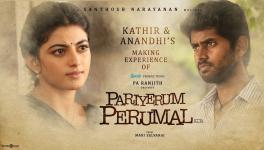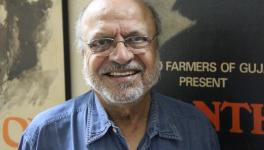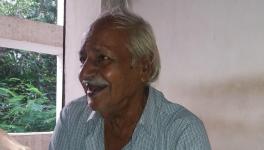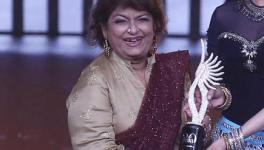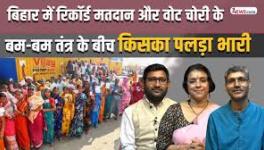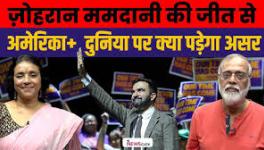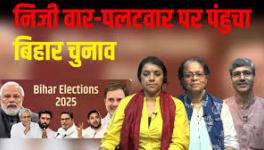Asha Bhosle: A Melodic Rebel
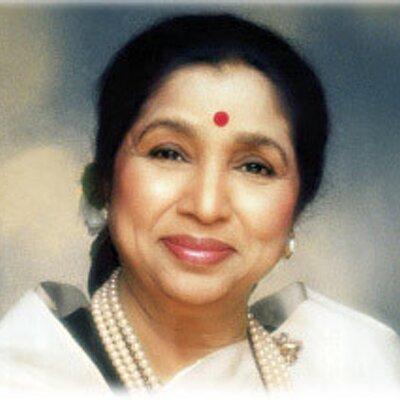
Image credit: X @ashabhosle
At 92, Asha Bhosle still smiles with the mischief of a teenager and sings with the cadence of someone who has for over half a century been the undisputed queen of croon. “I am not done yet,” who will doubt that! For how does one define an energy that has slipped through every pigeonhole the society tried to keep it in? Asha Bhosle is not just a singer; she is the voice of rebellion wrapped in velvet, audacity carried on breath, and the soundtrack of modern Indian womanhood in all its glorious contradictions.
In 1958, a seductive crooner Madhubala capitivated with Aaiyee Meherban, reframing the timeless beauty, and in 1995, she was the voice of a gyrating Urmila Matondkar, giving the future its night club beats with Rangeela.
Her life itself defies the polite, varnished expectations once imposed on women of her generation. Married at 16 to the much older Ganpatrao Bhosle, estranged soon after, she carved her career out of necessity rather than design.
Asha’s path was the rougher one — of hunger, struggle, and survival. She took on assignments that others would not touch: raucous cabaret numbers, vampish songs dripping with innuendo, and nightclub croons designed for smoky dance floors rather than temple courtyards. In doing so, she built a space no one else could occupy, and refused to apologise for it. Its sanctity endorsed by swooning hordes of enchanted listeners.
Her first great leap came with O.P. Nayyar, the maverick composer, who believed that his brassy, rhythm-driven scores were a better fit for Asha. Their collaboration was explosive: “Aaiye Meherbaan” dripped with seduction, “Yeh Hai Reshmi Zulfon Ka Andhera” turned a veil into a weapon, and “Ude Jab Jab Zulfen Teri” became a national tease. With Nayyar, she was on the high road to becoming a genre unto herself.
Then came the second, bigger pivot: the film, Teesri Manzil (1966). R.D. Burman was a young, untested composer, carrying the burden of his father S.D. Burman’s legacy. With Asha, he detonated onto the scene. “Aaja Aaja Main Hoon Pyar Tera” was not just a song — it was a revolution. The breathless experiment that followed proved she made usage of breath control as expression of the lyrics. Hindi cinema had never heard anything like it.
From there, Asha became the voice of a new female prototype on screen. When actor Zeenat Aman swayed to “Dum Maro Dum,” it was Asha’s voice that gave her hippie rebellion its credibility. When Parveen Babi purred through Namak Halaal’s “Jawan Janeman,” it was Asha’s voice that made the modern, nightclub-going Indian woman palatable and magnetic to the masses, fully formed women of agency, not just costume and make up.
Her audacity lies in this very shaping of the cinematic feminine. The film Umrao Jaan was a period piece, but it’s subtext was modern, questioning, unconventional—actor Rekha, brought to life with ghazals about self-awareness, love-longing and abandonment. Asha is the aural architect of post-colonial emerging Indian woman’s persona.
And yet, even within the frenzy of disco beats and global riffs, Asha could pivot to something unearthly. Gulzar’s song “Mera Kuchh Samaan” (Ijaazat, 1987) is the ultimate proof. When R.D. first read the lyrics, they looked like chopped-up prose — “Mera kuchh samaan tumhare paas pada hai…” He dismissed it as unsingable. Asha simply hummed it, letting the words find their own melody. The result was a song without meter, without conventional structure, but with the ache of lived memory. The other woman’s song. It won her a National Award, but more than that, it showed her ability to turn a fragmented poem into a whole new grammar of song.
Her virtuosity lies in these leaps. Asha’s voice could bend, crack, giggle, moan, whisper, or thunder — often within the span of a few lines. She made the listener feel she was singing directly, privately, dangerously to them. That intimacy is what made her cabaret numbers
With R.D., Asha created a sound that spanned continents, mixing jazz riffs, Latin beats, and Hindustani ragas into something entirely modern. She endured tragedy — the loss of her daughter Varsha, the passing of R.D. — with stoic resilience. And yet she continued to perform, record, and even open restaurants, never reducing herself to a relic of nostalgia.
In 1958, Asha made people swing to the song Mera Naam Chin Chin Choo, propelling dancer Helen as an icon— With Rangeela 40 years later, she gave the same persona a newer construct with Urmila’s hip swings.
She is the voice of women who refused to be neatly catalogued into boxes. She could be the coy seductress, the fiery lover, the betrayed courtesan, or the playful street urchin, and she inhabited them without shame. In a society that often insists women grow quiet with age, she was undaunted.
Now, at 92, she insists she has more to give. One suspects that even if she never records another note, her voice will not fall silent. It is too embedded in the collective memory of India, too entwined with its idea of modernity, too rebellious to be buried. Generations will still sway to “Chura Liya Hai Tumne,” blush at “Piya Tu,” ache at “Mera Kuchh Samaan”, and “Justujoo jiski thee” and marvel at the fact that all of them came from the same throat.
Where there is Asha, there is indeed life. Life not as polite society demands it, but as it really is: messy, sensual, joyous, mournful, playful, audacious. And perhaps that is why Asha Bhosle is not done yet — because life itself, in all its contradictions, is not done with her.
The writer is an independent journalist. The views are personal.
Get the latest reports & analysis with people's perspective on Protests, movements & deep analytical videos, discussions of the current affairs in your Telegram app. Subscribe to NewsClick's Telegram channel & get Real-Time updates on stories, as they get published on our website.









